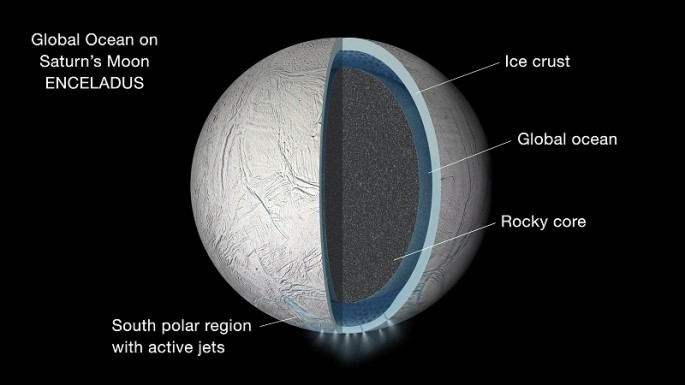NASA scientists have detected a global ocean under the icy surface of Saturn's mysterious moon, Enceladus. Previously, data acquired by NASA's Cassini probe revealed that there is steam present on the southern polar region of the moon, indicating liquid and ice.
Now, scientists are suggesting that there lies a vast water reservoir underneath the ocean located between the moon's rocky inner core and its icy upper crust. Since Enceladus possesses a slightly wobbly orbit around Saturn, this indicates that this massive ocean can span across the entire moon.
According to lead author of the study and Cassini Imaging Team researcher, Peter Thomas of Cornell University, New York, this was a challenging problem that required years of observations and calculations across a diverse number of disciplines, and now, the team is confident that they are finally right about this.
Mission scientists have examined and analyzed hundreds of images captured by the Cassini spacecraft that has been orbiting Enceladus since last year. They used data based on measurements from the wobble of the moon and developed different models to imagine how Enceladus might appear from the inside that also included how the moon is frozen from the surface to its core.
According to Cassini scientist Matthew Tiscareno, if the surface and core are both rigidly linked together then this will make the core function as a dead weight that can cause a less wobbly orbit than currently observed. This wobble is caused by this global layer of liquid that separates the surface from its core.
However, NASA scientists say that the process how the hidden ocean on Enceladus remains liquid and unfrozen is still a mystery. The Cassini probe will now conduct a close flyby, some 50 kilometers above its surface on October 28.
This study is published in the journal, Icarus.



























